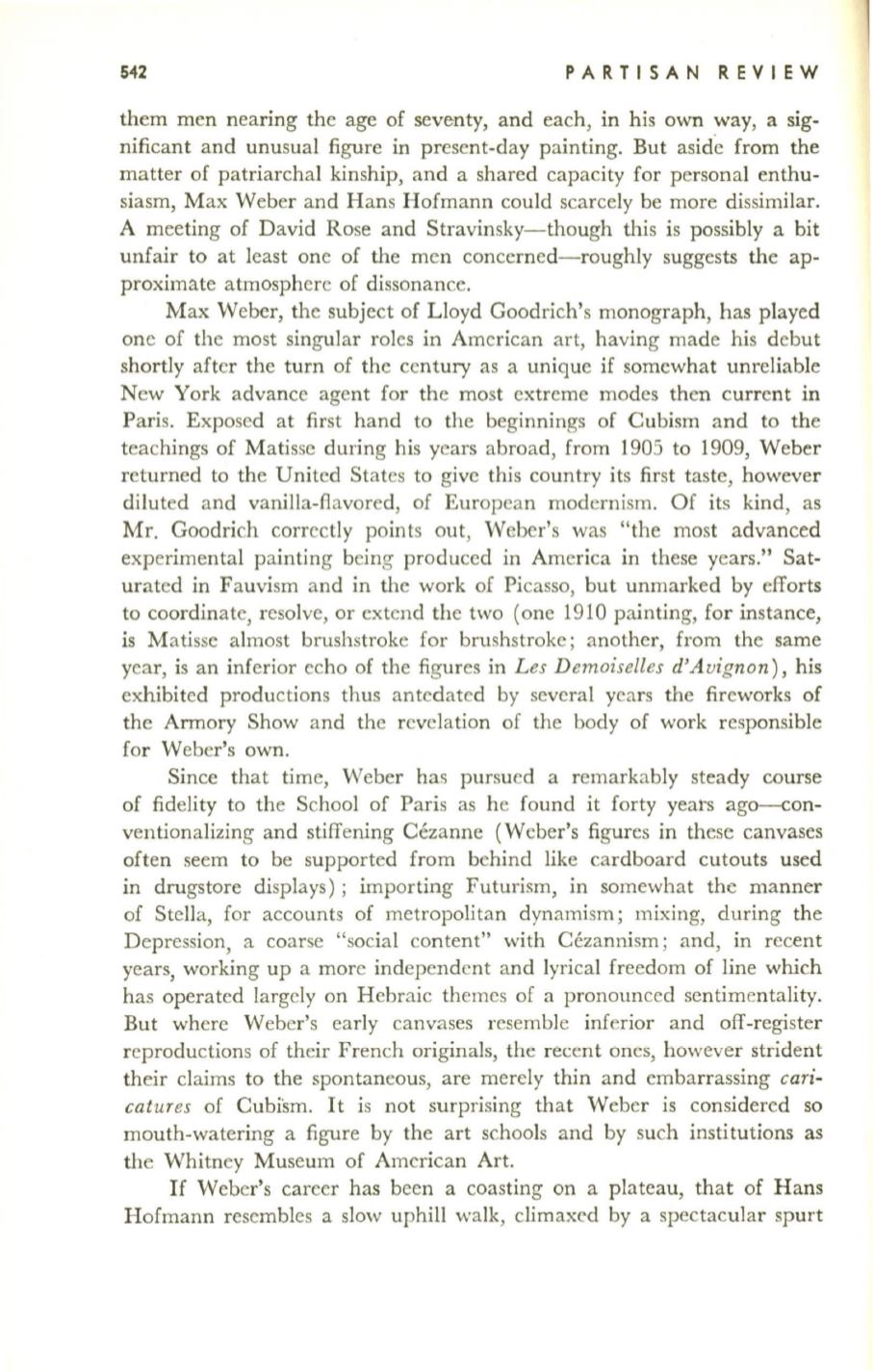
542
P A R T I SAN REVI EW
them men nearing the age of seventy, and each, in his own way, a sig–
nificant and unusual figure in present-day painting. But aside from the
matter of patriarchal kinship, and a shared capacity for personal enthu–
siasm, Max Weber and Hans Hofmann could scarcely be more dissimilar.
A meeting of David Rose and Stravinsky-though this is possibly a bit
unfair to at least one of the men concerned-roughly suggests the ap–
proximate atmosphere of dissonance.
Max Weber, the subject of Lloyd Goodrich's monograph, has played
one of the most singular roles in American art, having made his debut
shortly after the turn of the century as a unique if somewhat unreliable
New York advance agent for the most extreme modes then current in
Paris. Exposed at first hand to the beginnings of Cubism and to the
teachings of Matisse during his years abroad, from 1905 to 1909, Weber
returned to the United States to give this country its first taste, however
diluted and vanilla-flavored, of European modernism. Of its kind, as
Mr. Goodrich correctly points out, Weber's was "the most advanced
experimental painting being produced in America in these years." Sat–
urated in Fauvism and in the work of Picasso, but unmarked by efforts
to coordinate, resolve, or extend the two (one 1910 painting, for instance,
is Matisse almost brushstroke for brushstroke ; another, from the same
year, is an inferior echo of the figures in
Les Demoiselles d'Avignon),
his
exhibited productions thus antedated by several years the fireworks of
the Armory Show and the revelation of the body of work responsible
for Weber's own.
Since that time, Weber has pursued a remarkably steady course
of fidelity to the School of Paris as he found it forty years ago--con–
ventionalizing and stiffening Cezanne (Weber's figures in these canvases
often seem to be supported from behind like cardboard cutouts used
in drugstore displays); importing Futurism, in somewhat the manner
of Stella, for accounts of metropolitan dynamism; mixing, during the
Depression, a coarse "social content" with Cezannism; and, in recent
years, working up a more independent and lyrical freedom of line which
has operated largely on Hebraic themes of a pronounced sentimentality.
But where Weber's early canvases resemble inferior and off-register
reproductions of their French originals, the recent ones, however strident
their claims to the spontaneous, are merely thin and embarrassing
cari–
catures
of Cubism. It is not surprising that Weber is considered so
mouth-watering a figure by the art schools and by such institutions as
the Whitney Museum of American Art.
If
Weber's career has been a coasting on a plateau, that of Hans
Hofmann resembles a slow uphill walk, climaxed by a spectacular spurt


